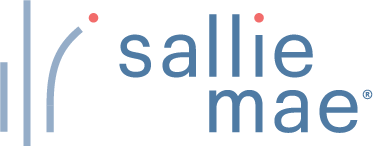Our goal here at Credible is to give you the tools and confidence you need to improve your finances. Although we do promote products from our partner lenders, all opinions are our own.
Community college is less expensive than four-year schools, but paying for it can still be a financial strain.
The total cost of attendance at a community college for one year was $12,720 on average for the 2019-2020 academic year, according to The College Board. By comparison, the average cost of college per year at a public four-year school for an in-state student was $25,980 and $52,570 for a private school.
Even with this lower price tag, you might need to take out student loans for community college to cover the cost.
Here’s what you should know about getting student loans for community college:
Apply for federal aid with the FAFSA
Filling out the Free Application for Federal Student Aid (FAFSA) is an essential first step to getting financial aid. The federal government, states, and schools use the FAFSA to decide if you qualify for college grants, federal student loans, work-study programs, and even some scholarships, which don’t have to be repaid.
Even if you think you won’t qualify for federal aid, be sure to submit the FAFSA. You might be surprised to find that you qualify for aid you didn’t know about.
In fact, only 65% of high school graduates complete the FAFSA, according to a study by the U.S. Department of Education.
Of those who didn’t complete it:
- 32% thought their family was ineligible for financial aid
- 28% didn’t want to take on debt
- 15% didn’t know they should complete the FAFSA
- 9% said the FAFSA was too time-consuming
Be sure to take the time to submit the FAFSA to see what aid you might qualify for.
Learn More: How to Qualify for Financial Aid
Take out federal student loans
If you need to borrow money to pay for community college, it’s a good idea to start with federal student loans. These tend to have lower interest rates and more repayment options than private student loans.
Keep in mind that to apply for federal student loans, you must:
- Attend an accredited school that participates in the federal Direct Loan program
- Be enrolled at least half time in a program that leads to a degree or certificate
There are also borrowing limits for federal student loans, which can affect the types of loans you qualify for.
There are three main federal student loan options for undergraduate students:
- Direct Subsidized Loans: These loans are for undergraduate students with financial need. The government will cover the interest that accrues while you’re in school, during your grace period, and during any periods of deferment.
- Direct Unsubsidized Loans: Unlike subsidized loans, both undergraduate and graduate students can qualify for unsubsidized loans, regardless of financial need. However, you’re responsible for all of the interest that accrues.
- Parent PLUS Loans: Parents of undergraduate students can borrow up to the total cost of attendance to pay for their child’s education. Unlike other federal loans, Parent PLUS Loans require a credit check.
| Loan type | Who qualifies? |
Interest rates (2019-2020) |
Loan limits |
|---|---|---|---|
| Direct Subsidized Loans | Undergrad students with financial need | 2.75%* | $3,500 to $5,500 per year |
| Direct Unsubsidized Loans | Undergrad, graduate, and professional students | Undergrad: 2.75%*
Graduate and professional: 4.30%* |
Dependent undergrad: $5,500 to $7,500 per year ($31,000 total limit)
Independent undergrad: $9,500 to $12,500 per school year ($57,500 total limit) Graduate and professional: $20,500 per year |
| Parent PLUS Loans | Parents | 5.30%* | Cost of attendance minus any other financial aid received |
| *Federal student loan rates for the 2020-21 academic school year. | |||
Fill in any funding gaps with private student loans
Because federal loans have annual caps on how much you can borrow, you might run into the borrowing limits at some point.
If you need more money to pay for your community college program, private student loans could help cover your expenses.
- Find a cosigner: If you’re considering federal vs. private student loans, keep in mind that private student loans require a credit check. If you’re a recent high school graduate, you might not have an established credit history or income yet. Having a creditworthy cosigner could help you qualify for a loan.
- Check to see which lenders will cover your school: Not all private student loan lenders offer loans for community college, but several do. Make sure to see which lenders will work with your chosen school.
- Compare your rates and terms: Be sure to shop around and compare rates from as many lenders as possible to find the right loan for you. Also pay attention to variable versus fixed interest rates, repayment terms, and whether payments are required while you’re in school. This is easy with Credible — you can compare your rates from our partner lenders in the table below in two minutes.
| Lender | Fixed rates from (APR) | Variable rates from (APR) |
|---|---|---|
| 3.53%+ | 2.72%+ | |
 |
4.25%+1 | 1.24%+1 |
 |
3.59%+2,3 | 1.24%+2,3 |
 |
4.84% – 12.39%6 | 1.59% – 11.37%6 |
 |
4.09%+7 | 2.04%+7 |
 |
3.83%+8 | 1.64%+8 |
 |
3.75%+ | N/A |
 |
4.25% – 12.35%9 | 1.25% – 11.15%9 |
your credit score. 100% free! Compare Now |
||
|
Lowest APRs reflect autopay, loyalty, and interest-only repayment discounts where available | 1Citizens Bank Disclosures | 2,3College Ave Disclosures | 6Discover Disclosures | 7EDvestinU Disclosures | 8INvestEd Disclosures | 9Sallie Mae Disclosures |
||
|
Citizens Bank Student Loan Rate Disclosure
|
||
Frequently asked questions about community college
No, community colleges aren’t free, but they’re typically much less expensive than the cost of a four-year university or private college.
While a year at a community college could cost you about $12,720, the same amount of time at a four-year public or private school might run you anywhere from $25,980 to $52,500.
Learn More: Paying for College at Public Universities
Community colleges typically provide two-year programs for certificates or associate degrees while colleges and universities generally offer four-year bachelor’s degrees.
If you attend a community college and want to obtain a bachelor’s degree, you’ll have to transfer to a four-year school after completing two years of community college to finish your education.
Some of the benefits of community college include:
- Less expensive education: Community college programs tend to be significantly cheaper than four-year schools. If you plan to pursue a bachelor’s degree, you can use the “2+2” strategy, where you attend community college for two years and then transfer to a four-year school. This approach could cut your education expenses in half.
- Potentially lower living costs: You might be able to commute to a local community college and save money by living off campus.
Community colleges typically offer certificate programs and associate degrees.
You could also attend a community college for general education and then transfer to a four-year school to earn a bachelor’s degree.
While you can often transfer credits you earn at a community college, not all four-year schools will accept them.
If you intend to transfer, be sure to work closely with your academic adviser to make sure your credits will be accepted.
On average, community college tuition and fees were $3,730 for the 2019-2020 academic year.
That cost went up an additional $8,990 for room and board, bringing the average annual total cost of attendance to $12,720 per year.
Learn More: How to Take Out a Student Loan
Yes, there are college scholarships and grants available to students attending community college.
To find gift aid opportunities, it’s a good idea to search sites like Scholarships.com, FastWeb, and Niche.
Student loans for community college can typically cover your total cost of attendance, which includes your tuition, fees, room and board, books, and supplies.
Just keep in mind that federal student loans come with borrowing limits while private student loans might let you borrow up to the cost of attendance.
Learn More: On-Campus vs. Off-Campus Costs
It’s a good idea to apply for student loans early. For federal student loans, be sure to fill out the FAFSA as soon as possible to qualify for any federal financial aid you can. For the 2020-2021 academic year, the deadline to submit the FAFSA is June 30, 2021.
With private student loans, you can apply at any time. But keep in mind that it can take several weeks or even months for the lender to certify the loan with your school, so it’s a good idea to apply for the loan well before your semester begins.
If you decide to take out a private student loan, be sure to shop around and consider as many lenders as possible. This way, you can find a loan that fits your needs. Credible makes this easy — you can compare your rates from multiple lenders after filling out a single form.
See Your Rates
Checking rates will not affect your credit


